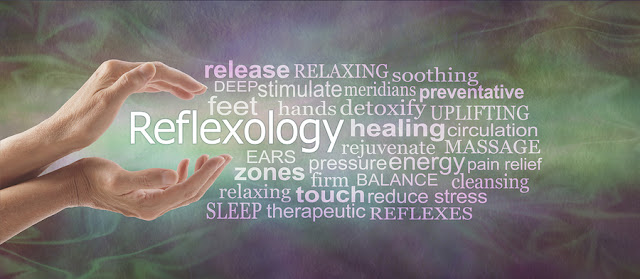What is Sciatica and How Can Reflexology Help?
Anyone who has ever experienced sciatica knows what an agonising pain it can be and how it can impact on every aspect of daily life. Nerve pain is very draining both physically and emotionally. If you have sciatica it can be almost impossible to get comfortable and many people find it very difficult to sit or lie down - only feeling some relief while standing or moving around, which is exhausting in itself.
Those who suffer from sciatica can feel anything from a mild leg cramp to excruciating pain radiating from the back and down the leg. At its worst, it can be agonising. The pain can come on suddenly or gradually get worse. Pregnancy can even cause sciatica to develop because of the pressure of the uterus pushing on the spinal column.
Reflexology is a therapy that aims to bring balance to all the systems of the body. It aims to promote deep relaxation and reduce stress levels.
So, What is Sciatica?
The sciatic nerve is the longest nerve in our body. It runs from the lower back through the hip and along the leg to the heel. When the nerve is pinched or damaged it causes pain and this can be very debilitating. Sometimes sciatica is caused by a slipped disc that rubs against or pinches the nerve, but in many cases the problem doesn’t originate in the back - it is caused by a muscle in the buttocks, called the piriformis, which sometimes becomes tight. Lumbar degenerative disc disease, bone spurs, lumbar spinal stenosis, spondylolisthesis or spinal tumours can also cause sciatica.
The pain of sciatica causes a vicious circle, which is difficult to break - pain causes muscle contraction, which causes more pain, more muscle contraction, and so on. We end up in a vicious circle of pain and contraction, which just doesn't seem to end.
One option of course, is to load up on painkillers, but many people are looking for alternatives because they want to treat the cause, not the symptoms. This is where Reflexology can be so important, and it can help for three reasons:
1. Deep relaxation - this stops the vicious cycle of pain and muscle tension, even if only for a short time. Sometimes relaxing the body can be the most important step to relieving sciatica, because it allows time for healing.
2. Targeted relief - by working specific reflex points in the foot or hand that correspond to the spine, sciatic and hip areas, reflexologists are able to relax the specific muscles and restore energy balance. This can also trigger the release of powerful natural anti-inflammatories from the adrenal glands.
3. Pain relief - because reflexology takes a holistic approach, part of a treatment will include work on hormone balancing, helping those feel-good hormones such as serotonin and endorphins to be produced. These are natural painkillers and they are carried in the bloodstream, which in turn is stimulated by the reflexology treatment.
That is the magic of Reflexology!




Comments
Post a Comment